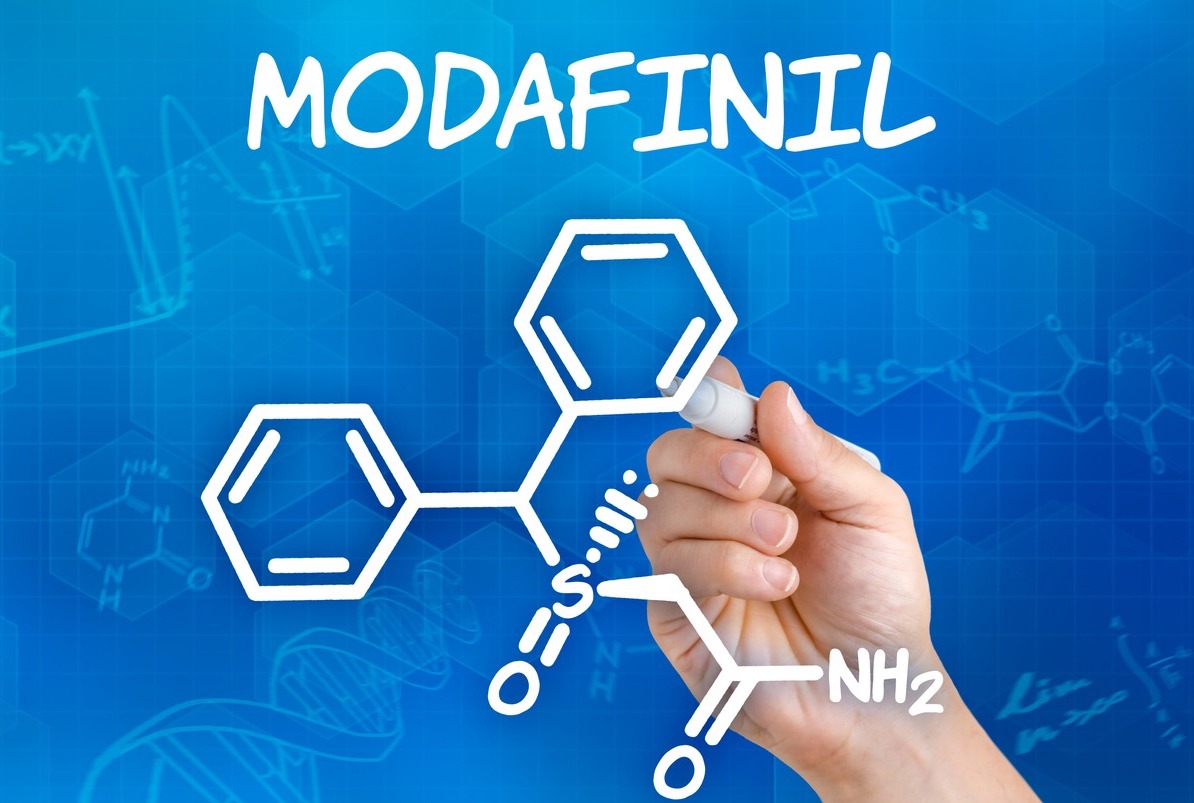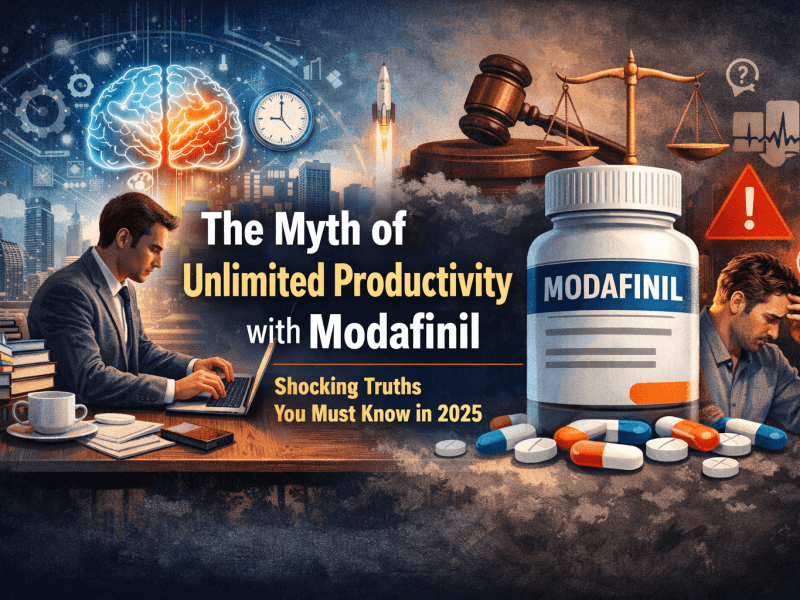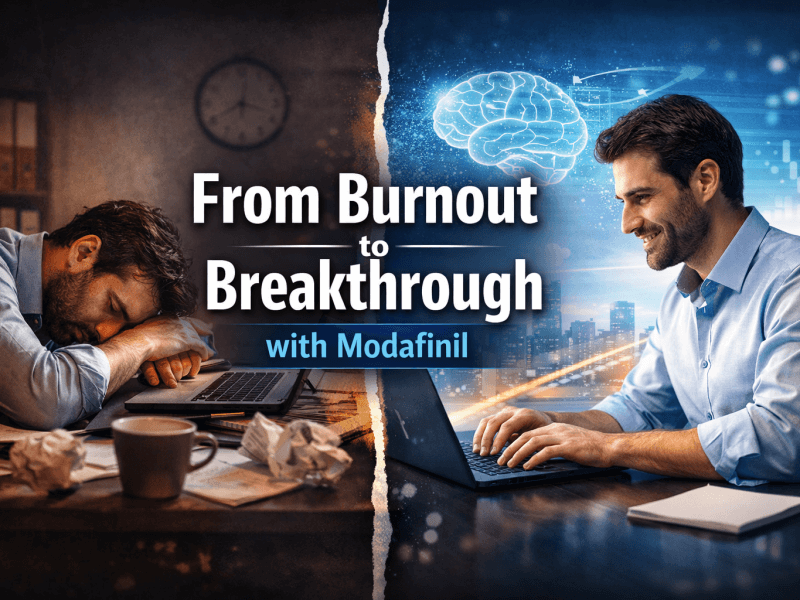Last Updated on 13/08/2025 by James Anderson
Introduction to Modafinil
What Is Modafinil?
Modafinil is a wakefulness-promoting medication primarily prescribed to treat excessive sleepiness. It’s not a traditional stimulant like amphetamines, but rather a eugeroic meaning it promotes alertness without the same “wired” feeling or high risk of dependency.
Mechanism of Action
The exact mechanism isn’t fully mapped, but researchers believe modafinil works by modulating neurotransmitters like dopamine, norepinephrine, and histamine. Think of it as adjusting your brain’s “wakefulness dial” rather than flipping it from “off” to “on.”
History and Regulatory Approval
Developed in the late 1970s in France, modafinil gained FDA approval in 1998 for narcolepsy and later for other sleep-related disorders. It’s now widely prescribed across multiple countries, though regulations vary.
Approved Medical Uses of Modafinil
Narcolepsy Treatment
Narcolepsy causes sudden sleep attacks and daytime drowsiness. Modafinil helps patients stay awake, improving both safety and quality of life.
Shift Work Sleep Disorder
For people working non-traditional hours, modafinil can combat the mental fog and fatigue that come from misaligned circadian rhythms.
Obstructive Sleep Apnea Related Sleepiness
Even with CPAP therapy, some OSA patients remain tired. Modafinil helps address residual daytime sleepiness.
Dosage Guidelines and Administration
Typically taken once daily in the morning (or before a night shift), modafinil doses range from 100 to 200 mg. Physicians tailor the regimen to individual needs.
Off-Label and Emerging Applications
Cognitive Enhancement in Healthy Individuals
Often dubbed the “smart drug,” modafinil is used by students, executives, and military personnel for improved focus, working memory, and decision-making though this remains controversial.
ADHD Management
Some patients with ADHD respond well to modafinil, especially those who can’t tolerate stimulant medications.
Depression-Related Fatigue
In cases of treatment-resistant depression, modafinil may help alleviate debilitating fatigue, boosting motivation and mood.
Multiple Sclerosis–Related Fatigue
MS-related fatigue can be overwhelming. Modafinil offers relief for some patients, allowing them to engage more fully in daily activities.
Post-Anesthesia Recovery
Emerging studies suggest modafinil might speed recovery from grogginess after surgery, improving alertness without overstimulation.
Mechanistic Insights into Emerging Uses
Neurotransmitter Modulation
Modafinil impacts dopamine transporters, increasing dopamine levels in certain brain regions without the intense spikes seen with traditional stimulants.
Effects on Dopamine, Norepinephrine, and Histamine Systems
It subtly boosts norepinephrine and histamine, which play key roles in wakefulness, attention, and cognitive function.
Neuroprotective Potential
Preliminary data hint that modafinil might protect neurons from oxidative stress, opening doors for neurodegenerative disease research.
Safety, Side Effects, and Contraindications
Common Side Effects
Headache, nausea, and insomnia are the most frequent complaints often resolving with dosage adjustment.
Rare but Serious Reactions
Stevens-Johnson syndrome, psychiatric symptoms, and severe allergic reactions are extremely rare but require immediate discontinuation.
Drug Interactions
Modafinil can reduce the effectiveness of hormonal contraceptives and interact with certain antidepressants and anti-seizure medications.
Use in Special Populations
Not recommended for children, and caution is advised in pregnancy and in individuals with cardiovascular conditions.
Legal Status and Availability
Prescription Regulations by Country
In the U.S., modafinil is Schedule IV (low abuse potential). In some countries, it’s prescription-only; in others, it’s restricted entirely.
Generic Versions and Brand Names
Common brand names include Provigil, Modvigil, and Alertec. Generics have made the drug more accessible and affordable.
Accessibility Challenges
Insurance coverage varies, and in some regions, obtaining a prescription can be difficult without a clear diagnosis.
Future Directions in Modafinil Research
Clinical Trials in Neurodegenerative Diseases
Trials are exploring its role in Alzheimer’s and Parkinson’s to address fatigue and cognitive decline.
Potential Role in Chronic Fatigue Syndrome
Preliminary findings show promise, but larger studies are needed to confirm benefits.
Expanding Understanding of Long-Term Safety
Decades-long use data is limited, so ongoing monitoring and research are essential.
Comparison of Modafinil to Other Drugs
| Drug | Primary Use | Mechanism of Action | Abuse Potential | Common Side Effects |
|---|---|---|---|---|
| Modafinil | Sleep disorders, cognitive aid | Promotes wakefulness via orexin | Low | Headache, nausea, insomnia |
| Methylphenidate | ADHD, narcolepsy | Increases dopamine and norepinephrine | Moderate | Anxiety, increased heart rate |
| Amphetamines | ADHD, narcolepsy | Enhances catecholamine release | High | Jitteriness, dependency |
| Armodafinil | Sleep disorders | Similar to modafinil | Low | Same as modafinil |
| Caffeine | General stimulant | Blocks adenosine receptors | Low | Restlessness, dehydration |
Conclusion
Modafinil has evolved from a niche narcolepsy treatment to a widely studied drug with diverse applications. While approved uses remain focused on sleep disorders, its potential in neurology, psychiatry, and beyond makes it one of the most intriguing pharmaceuticals of our time. However, like any medication, it must be used responsibly and under medical supervision.
FAQ
1. Is modafinil addictive?
Modafinil has a low potential for abuse compared to traditional stimulants, but misuse is still possible.
2. Can modafinil improve memory?
Some studies suggest it can enhance working memory, especially in sleep-deprived individuals, but effects vary.
3. How long does modafinil last?
Its effects typically last 10-15 hours, depending on metabolism.
4. Can I drink coffee with modafinil?
Yes, but combining them can increase jitteriness and insomnia in sensitive individuals.
5. Is modafinil safe for long-term use?
Short- to medium-term use appears safe for most people, but long-term effects need more research.
‼️ Disclaimer: The information provided in this article about modafinil is intended for informational purposes only and is not a substitute for professional medical consultation or recommendations. The author of the article are not responsible for any errors, omissions, or actions based on the information provided.
References:
- Oliva Ramirez A, Keenan A, Kalau O, Worthington E, Cohen L, Singh S. Prevalence and burden of multiple sclerosis-related fatigue: a systematic literature review. https://doi.org/10.1186/s12883-021-02396-1 . 2021.
- Ciancio A, Moretti MC, Natale A, Rodolico A, Signorelli MS, Petralia A. Personality Traits and Fatigue in Multiple Sclerosis: A Narrative Review. Journal of Clinical Medicine. https://doi.org/10.3390/jcm12134518 . 2023
- Mereu, M., Bonci, A., Newman, A. H., & Tanda, G. The neurobiology of modafinil as an enhancer of cognitive performance and a potential treatment for substance use disorders. https://doi.org/10.1007/s00213-013-3232-4 . 2013
- U.S. Food and Drug Administration. PROVIGIL. U.S. Department of Health and Human Services. https://www.accessdata.fda.gov/drugsatfda_docs/label/2015/020717s037s038lbl.pdf . 2015
- Ballon JS, Feifel D. A systematic review of modafinil: potential clinical uses and mechanisms of action. J Clin Psychiatry. 2006
- Willavize, S. A., Nichols, A. I., & Lee, J. Population pharmacokinetic modeling of armodafinil and its major metabolites. https://doi.org/10.1002/jcph.800 . 2016
- ADHD: Clinical practice guideline for the diagnosis, evaluation, and treatment of attention-deficit/hyperactivity disorder in children and adolescents. https://www.ncbi.nlm.nih.gov/pubmed/22003063. 2011
- Arnold, V. K. A 9-week, randomized, double-blind, placebo-controlled, parallel-group, dose-finding study to evaluate the efficacy and safety of modafinil as treatment for adults with ADHD. Available at: https://www.ncbi.nlm.nih.gov/pubmed/22617860. 2012


